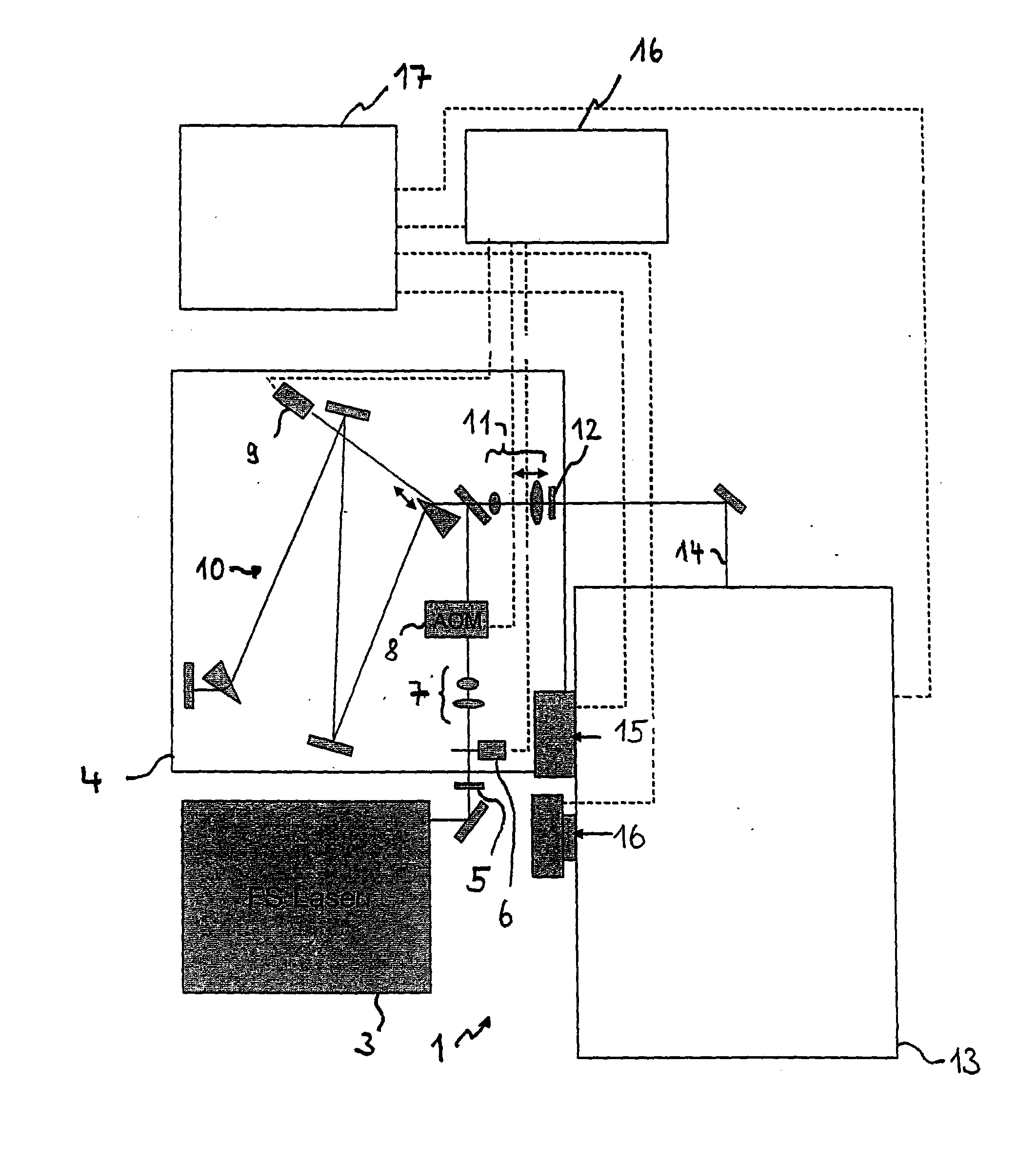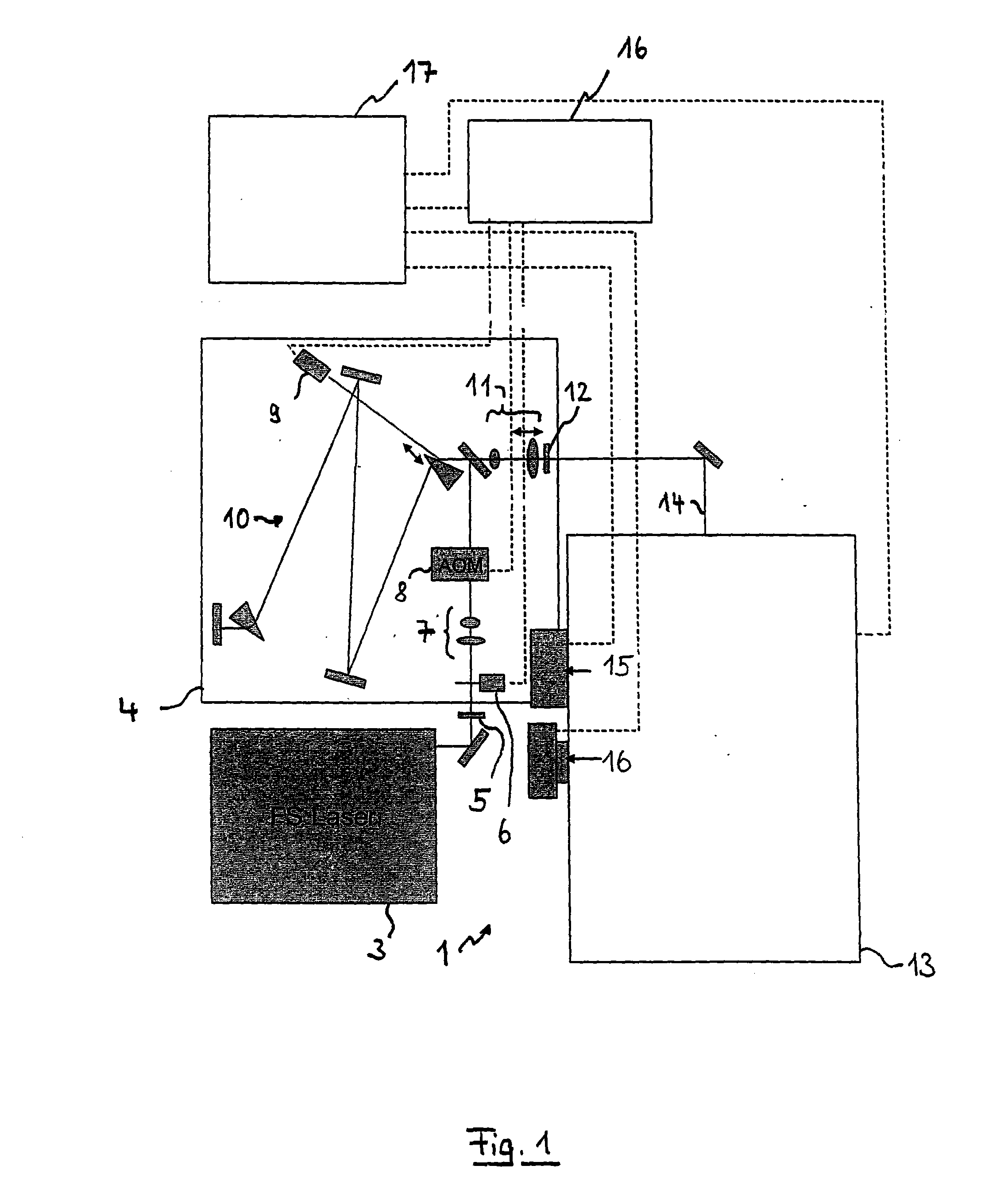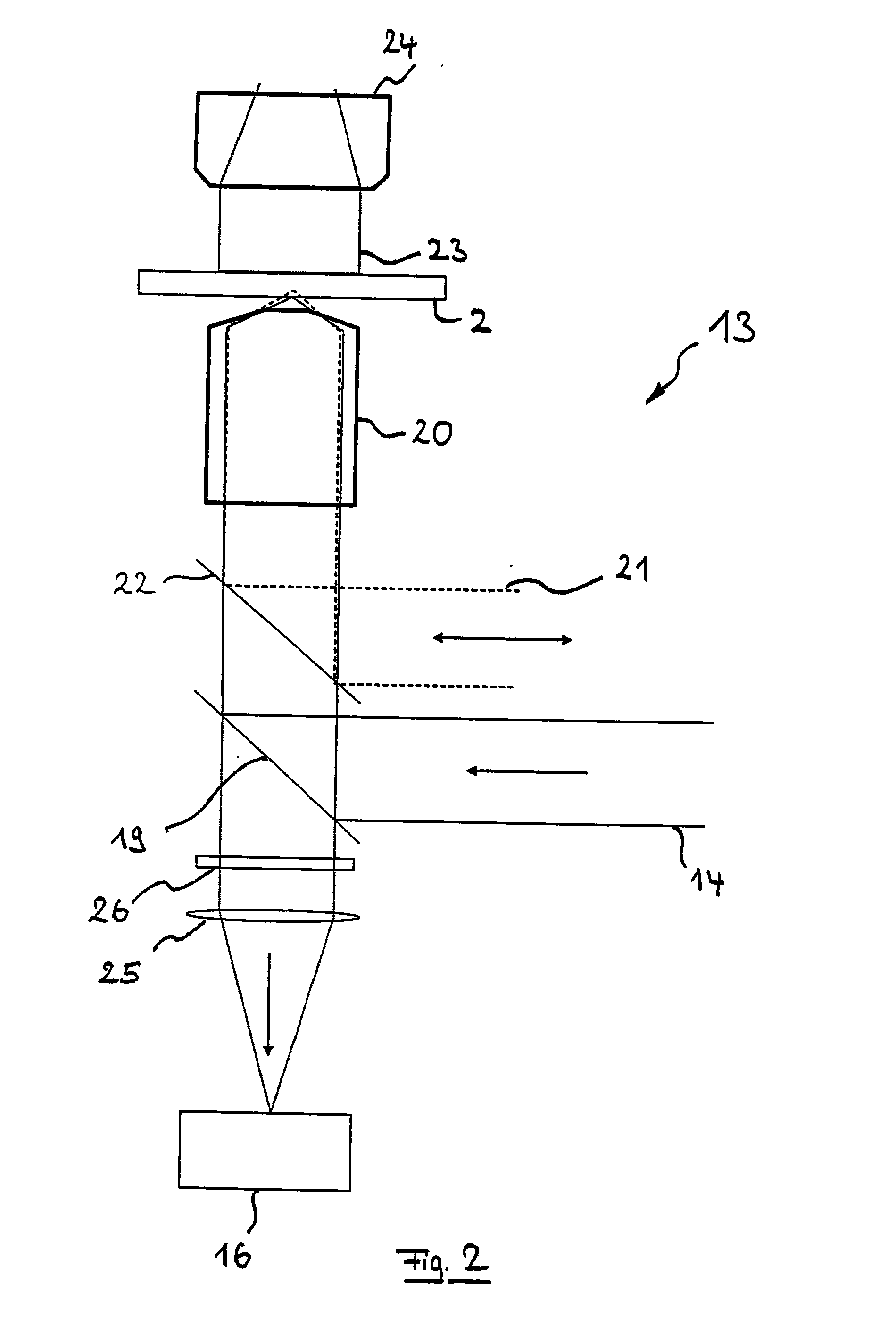Laser beam machining
a laser beam and laser beam technology, applied in the direction of photomechanical equipment, instruments, manufacturing tools, etc., can solve the problems of insufficient autofocus quality of such systems, difficult or even impossible reference of the absolute position of the focus, and insufficient accuracy of the autofocus system, etc., and achieve the effect of high precision
- Summary
- Abstract
- Description
- Claims
- Application Information
AI Technical Summary
Benefits of technology
Problems solved by technology
Method used
Image
Examples
Embodiment Construction
[0058]FIG. 1 shows a laser scanning microscope 1 with which a multi-dimensional structure is produced by means of direct laser writing (i.e. per laser scanning lithography) in a workpiece which can be a polymer layer on a substrate for example. A two-photon process is used.
[0059]The illustration in FIG. 1 is greatly simplified. The microscope 1 uses a pulsed laser 3, e.g. an fs-laser, as a radiation source for the laser writing. The radiation of the laser 3, e.g. with a mean wavelength of 780 nm for example, is shaped in a pulse conditioner 4 into fs-pulses. For this purpose, the radiation is guided at first via a ½ wavelength plate 5, a mechanical shutter 6, a telescope 7, and an acousto-optical modulator (AOM) 8 and thus controlled in its intensity. The monitoring of the control (e.g. per closed-loop feedback) occurs via a monitor diode 9 which receives a share of the radiation.
[0060]After suitable setting of the group velocity dispersion (GVD) by means of a GVD module 10 in order...
PUM
| Property | Measurement | Unit |
|---|---|---|
| Angle | aaaaa | aaaaa |
| Structure | aaaaa | aaaaa |
| Distance | aaaaa | aaaaa |
Abstract
Description
Claims
Application Information
 Login to View More
Login to View More - R&D
- Intellectual Property
- Life Sciences
- Materials
- Tech Scout
- Unparalleled Data Quality
- Higher Quality Content
- 60% Fewer Hallucinations
Browse by: Latest US Patents, China's latest patents, Technical Efficacy Thesaurus, Application Domain, Technology Topic, Popular Technical Reports.
© 2025 PatSnap. All rights reserved.Legal|Privacy policy|Modern Slavery Act Transparency Statement|Sitemap|About US| Contact US: help@patsnap.com



